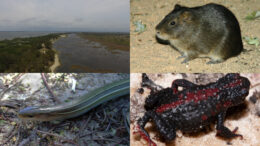In southern Brazil, especially the state of Rio Grande do Sul, severe flooding has caused an emergency being reported around the world. Human losses and homelessness there represent the biggest socioenvironmental catastrophe affecting the country.
One aspect that hasn’t yet garnered much media attention is the impact of these floods on rare and at-risk wildlife. For 11 years I worked on Marinheiros Island, situated on the estuary of Patos Lagoon in the heart of the now-flooded areas. On this island I identified the presence of three species of small vertebrates threatened with extinction, whose populations there are of great conservation importance.
Patos Lagoon is the most extensive lagoonal system in the world. Within this estuary Marinheiros is the largest island, covering an area of about 62 square kilometers (24 square miles).
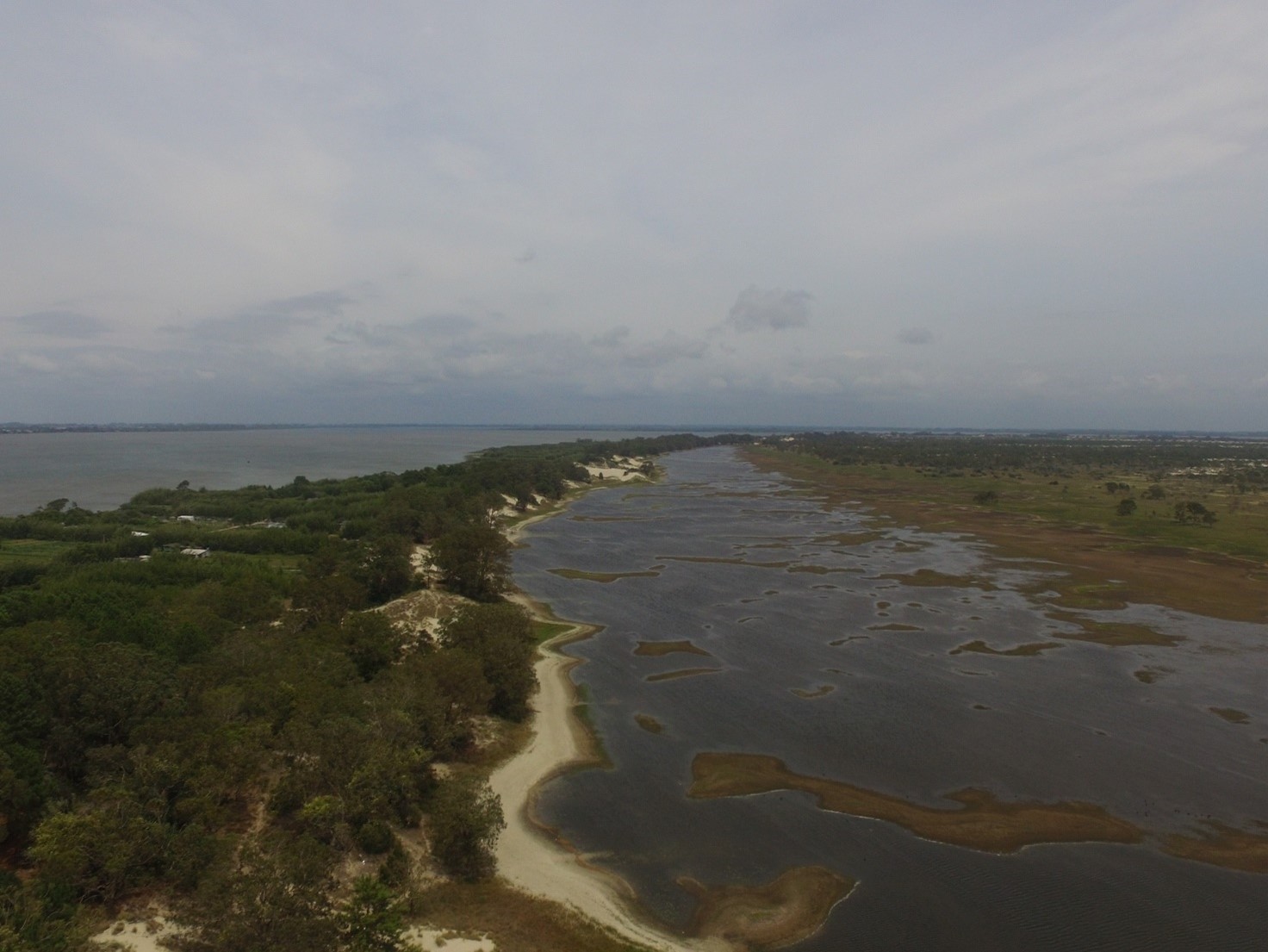
Even before the current crisis, over the past few years, Marinheiros has experienced harsh flooding associated with massive rainfall. The floods are even more intense during El Niño phenomena, which produce heavy rain in southern Brazil. Three main factors there, together, result in the rapid rise of estuarine water levels and consequent flooding of the lagoon’s islands and marginal mainland:
-
- The low elevations of marginal areas.
- Heavy rains that increase the flow of rivers into the Patos Lagoon system and the subsequent discharge of water in the choked estuary.
- Wind directions against the water flow from the estuary to the Atlantic Ocean, acting as a barrier for water discharging into the ocean.
The year 2023 saw a severe flood in Marinheiros Island and the marginal mainland of the Patos Lagoon estuary. This year has been even more calamitous. Flooding of 70% of the municipalities of Rio Grande do Sul — which includes the whole extension of the Patos Lagoon marginal zone — has, as of this writing, caused 149 people to lose their lives and forced more than 615,000 to leave their homes. Many of the more than 1,100 inhabitants of Marinheiros Island were rescued and sent to temporary shelters.
But rescuing the wildlife of Marinheiros Island has not become a priority. Three species deserve to be highlighted due to their very restricted distribution, habitat specificity, and conservation status.
A Toad, a Glass Snake and a Guinea Pig
The tiny red-bellied toad (Melanophryniscus dorsalis) — with a body length about 2 centimeters (just .78 inches) — can be considered a flagship species of Marinheiros Island.
The species’ existence on the island was only discovered in 2006, and it’s the southernmost known population of the species. Red-bellied toads are restricted to the coastal, marshy fields of the Brazilian states of Rio Grande do Sul and Santa Catarina and are considered threatened both regionally and nationally.
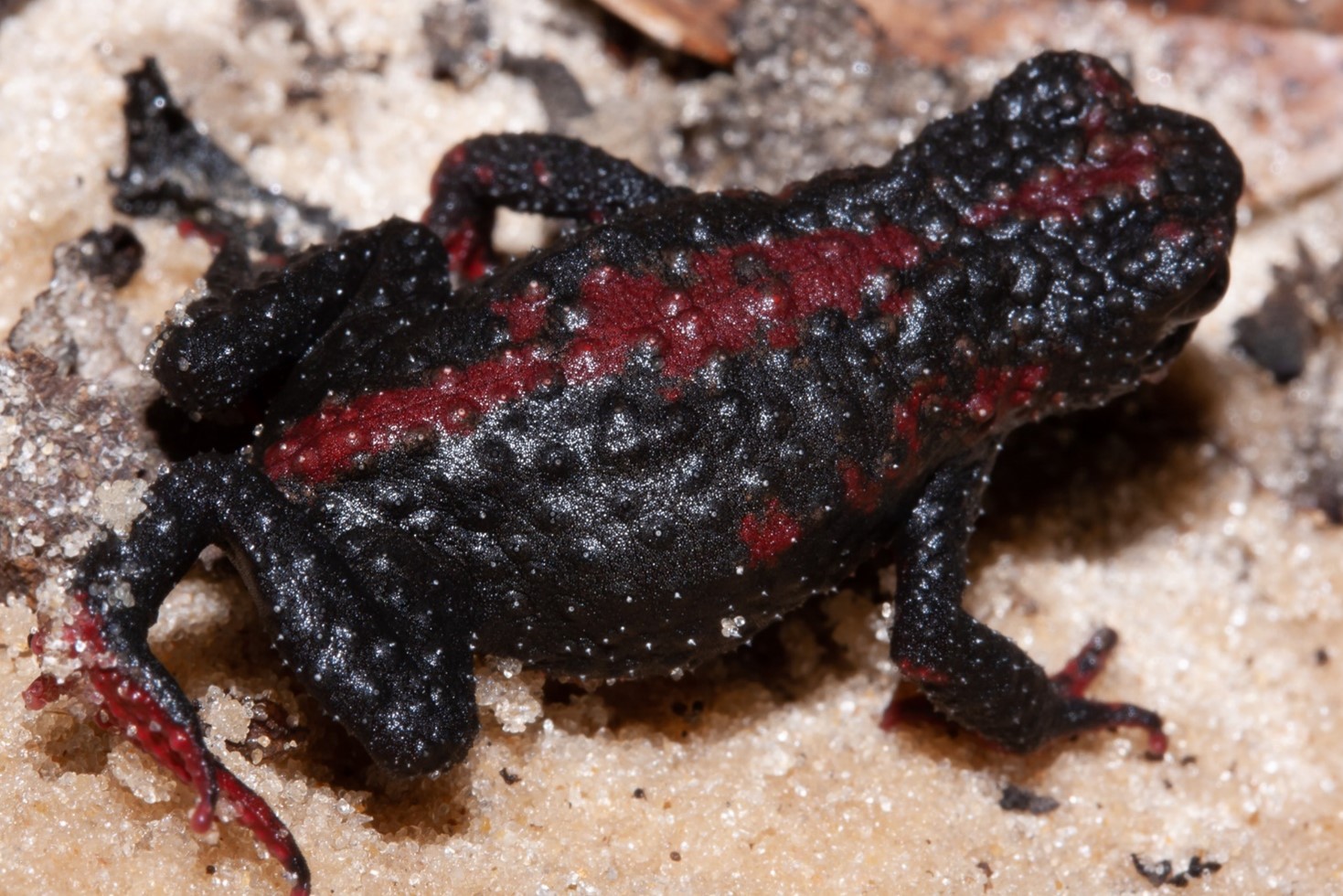
The estuarine glass snake (Ophiodes enso) was described only in 2017, and it is known from only three localities in the estuary of Patos Lagoon, one of which is Marinheiros Island. Like other reptiles commonly known as “glass snakes,” these animals are, in fact, legless lizards.
This species’ conservation status has not yet been officially evaluated by specialists at national and global levels. In the paper on the species description, however, Ophiodes enso is suggested as “critically endangered” given the small area of occurrence and the human-induced impacts on its habitats.
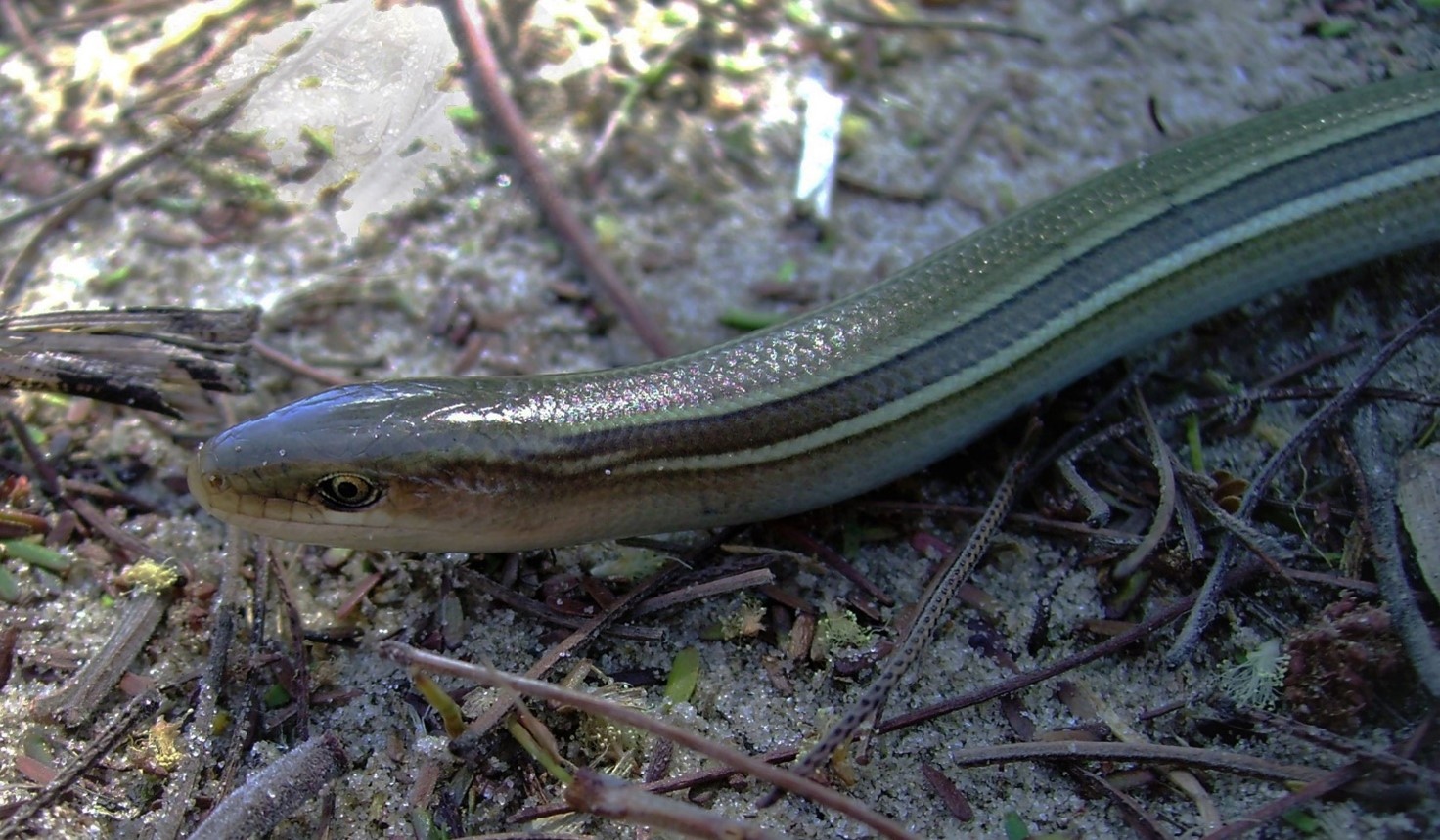
Finally, the greater guinea pig (Cavia magna) is a medium-sized rodent with a body length reaching 30 centimeters (about 1 foot). It lives on the borders of marshes and wet fields of a narrow coastal strip of Uruguay and southern Brazil’s Rio Grande do Sul and Santa Catarina states.
The species is classified as “endangered” in Uruguay and “vulnerable” in Rio Grande do Sul. Importantly, greater guinea pigs from Marinheiros Island are genetically distinct from other populations in terms of the number of chromosomes (individuals from Marinheiros Island have 64 chromosomes, while mainland populations have 62).
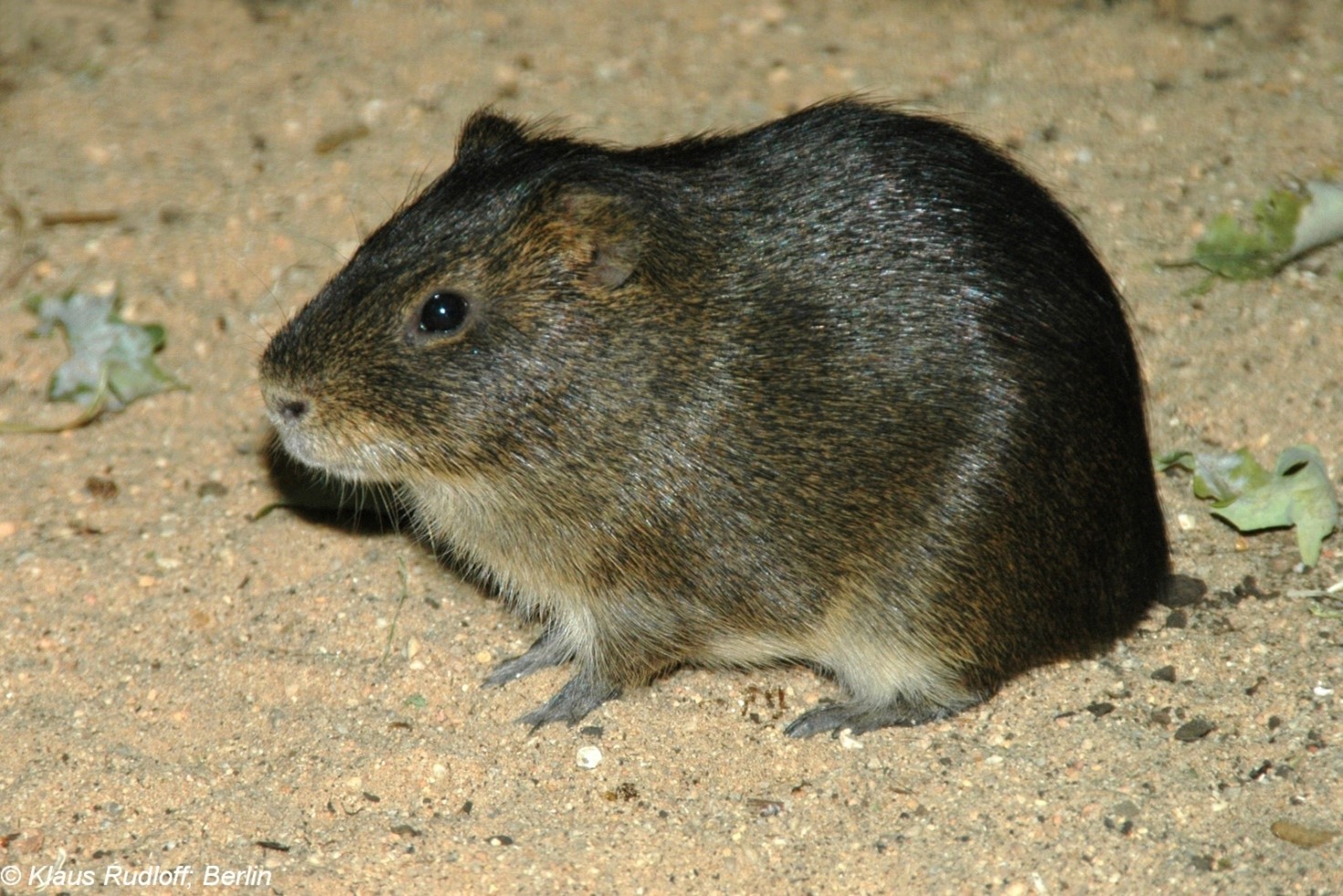
Floods, Vulnerability to Sea-Level Rise, and Loss of Habitats
Marinheiros Island is located in a low-elevation region. The estuarine glass snake and greater guinea pig are found in wet fields of the island’s marginal zone, where elevation does not exceed three meters (10 feet) above sea level. The red-bellied toad occurs in the marginal zone, in addition to more interior sandy fields and dunes, where elevations can reach about 10 meters (33 feet).
While the current rain-related floods are expected — and desired — to be a short-term condition, rising sea levels could cause the island to be permanently submerged. A study conducted in 2010 found that the entire marginal zone of Marinheiros Island — the area where these three species live — is highly susceptible to sea-level rise. This suggests that the ecosystems inhabited by these three small vertebrate species may be completely underwater in the next few decades.
The impacts of short-term floods on the red-bellied toad, estuarine glass snake and greater guinea pig remain unknown. These events induce disturbances to the species’ habitats, causing the loss of shelters and nesting sites and forcing individuals to migrate to more elevated island areas. In the tragic scenario of the sinking of the marginal lands, the species’ populations will indeed be forced to move to higher grounds.
The question remains: Will these areas of higher elevation present environmental suitability for establishing the three species?
The lands of higher elevation within Marinheiros Island currently comprise sand fields and dunes, which consist of drier habitats due to the high porosity of sandy soils. These conditions are difficult mainly for red-bellied toads and greater guinea pigs, who are associated with wet (palustrine) habitats.
Even if new wet areas appear in the remaining emerged lands, salinization is a major factor. Studies have demonstrated that seawater intrusion leads to the salinization of surface freshwater systems and groundwater of coastal zones.
So will red-bellied toad tadpoles develop in waters with increased salinity? Will the vegetation consumed by greater guinea pigs grow in salinized soils? Will the invertebrates consumed by estuarine glass snakes occur in a habitat drastically modified by seawater intrusion? I raise these ecological questions in hopes that species will successfully adapt to the new conditions. Otherwise, I expect, local extinctions will occur.
As has been observed in oceanic islands, rising sea levels will cause the loss of emerged lands and habitats on Marinheiros and other islands in the Patos Lagoon estuary. Populations of unique animal species from subtropical domains of South America are left to their own devices. Currently there’s no management plan aimed at local populations of endangered species in Marinheiros and other estuarine islands of Patos Lagoon. Local officials have ignored proposals for studies on the feasibility of a conservation unit establishment in interior areas of higher elevation and more suitable hydrological and phytophysiognomic conditions. Although it wouldn’t be a guarantee for the maintenance of the threatened populations, such a strategy could open paths for translocation and other conservation interventions.
The effects of climate change on the Marinheiros Islands go far beyond the local extinction of red-bellied toads, estuarine glass snakes and greater guinea pigs. The cultivation areas of the island’s marginal belt provide a livelihood to many families, whose way of life is now threatened. So the sinking of the Marinheiros Islands is of social as well as biological concern.
Marinheiros Island may seem large now, but rising sea levels threaten to make it a far smaller place.

The opinions expressed above are those of the author and do not necessarily reflect those of The Revelator, the Center for Biological Diversity or their employees.
Previously in The Revelator:
Storms and Rising Seas Threaten Coastal Ecosystems — Here’s What We Can Do

